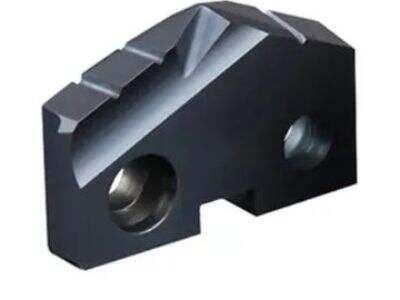When building gears that run smoothly and effectively, gear cutting precision is of the utmost importance. There are many factors that can affect the accuracy of gear cutting. HERE are FIVE main players to consider UPDATE: It has been brought to our attention that a few of those under References are reported to be General Industry Machinists' not Gummers From the top: 1.
Advantages
The significance of tool geometry in accurate gear shaping cannot be overstated. The form and angles of the cutting tools that form gears are an important factor in how accurate the final piece will be. But a properly constructed tool can help ensure that the teeth on gears are cut to the right size and shape, yielding gears that mesh cleanly and function smoothly together.
Features
Also important is an exploration of the contribution of machine rigidity to the accuracy of gear cutting. If a machine isn’t stiff enough, it may flex or vibrate while cutting and cause errors in the end product. And with rock solid, rugged machines, manufacturers can cut gears with precision to the minutest of tolerances and produce superior quality gears, cut to the most exacting of specifications.
Benefits
The influence of cutting speed on accuracy of gear tooth profiles is not to be underestimated. The rate at which the gears are cut can impact how well the cutting tools travel through the material and how cleanly they remove material to create the teeth. By being able to control cutting speeds, manufacturers can be assured of cutting gears which are precise and accurate, and that mesh effectively with other gears.
The third important issue to pay attention to is keeping lubricant of the gears to increase the accuracy of gear cutting. Lubrication may reduce stress from between the tool and the material and from heat generated from the cutting, and it may extend the life of cutting tools. By selecting the appropriate lubricant, and applying it the right way, manufacturers can increase the accuracy of gear cutting – and get better quality gears.
Material selection is too important to be relegated to the back by itself when considering the accuracy of the gear cutting process. The material that gears are made of can influence how easily they can be cut, how well they withstand stress and how precisely they can be shaped. When selecting the right gear cutting materials, manufacturers will be able to count on gears that will resist wear and tear and perform as intended in a range of applications.
Summary
Finally, PCD/CBN Inserts if precise gear cutting blames the dog, then attention to details and appreciation of the main influences that can affect cutting accuracy is key. With attention to tool design, machine stiffness, cutting speed, lubrication, and the choice of materials, gears may be fabricated to fit stringent specifications and to operate without failure. At NIGEL, we know accuracy in gear cutting is paramount and come to the market with tools and services for our customers to accomplish just that. By addressing these, manufacturers can design gears that are sturdy, effective, and long-lasting.

 EN
EN
 AR
AR
 BG
BG
 HR
HR
 CS
CS
 DA
DA
 NL
NL
 FI
FI
 FR
FR
 DE
DE
 EL
EL
 HI
HI
 IT
IT
 JA
JA
 KO
KO
 NO
NO
 PL
PL
 PT
PT
 RO
RO
 RU
RU
 ES
ES
 SV
SV
 TL
TL
 IW
IW
 ID
ID
 LT
LT
 SR
SR
 SK
SK
 UK
UK
 VI
VI
 HU
HU
 TH
TH
 TR
TR
 FA
FA
 MS
MS
 GA
GA
 AZ
AZ
 BN
BN



